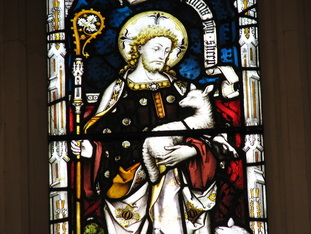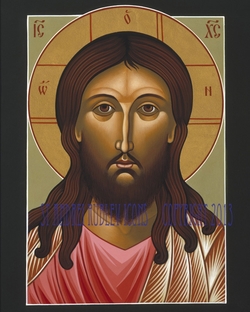 This week we are being offered the chance to go to the Sacrament of Reconciliation in an entire day designated for that purpose. As part of the Year of Mercy, Pope Francis has initiated “24 Hours for the Lord,” in which the sacrament will be offered literally all day in parishes all over the world. Some parishes might only be able to offer it for a limited number of hours, due to having fewer available priests, but others are literally going to be offering it all day and all night on March 4-5. The point of the extended hours of Reconciliation is to offer us an opportunity to envelop ourselves in the love of God. This is an invitation to listen to our own heart and to God’s heart as we come to see the ways we have failed or in which we are weak and in need of His strength. This opportunity invites us not into guilt, but into a deeper rhythm of listening to the words of love which God wants to speak. The process of approaching God for the Sacrament of Reconciliation is truly something beautiful, though I would daresay most people do not see it that way because it has never been presented to them as such. Jesus taught that we should not judge and we should not condemn. If He taught us to act this way, it should be obvious that God prefers to offer mercy rather than judgment in His dealing with us as well: He wants us to find His mercy, not condemnation. So we begin by spending time in reflection upon our own lives to see what areas might be broken, wounded, weak, or especially prone to sin. There are many options for doing this. We can seek out the Catechism, or pore over the Commandments or Works of Mercy to see which areas are in need of forgiveness and grace. But we cannot approach it by only thinking about which ‘rule’ we have broken; we need to look at it through the eyes of mercy. Yes, we should feel sorrow for our sins, but we cannot confuse our sinfulness with the beauty of who we are intended to be. The point is to get in touch with the rhythm of our heart and to keep our sins in the context of God’s love for us. Love is the heart of the gospel and so we must always examine our conscience while being aware of the mercy and love of God. Once we begin to sweep out the broken parts we also come to see the beauty that lies beneath the stain of our sin. In reconciling these areas with God we find new freedom through the grace He offers us. Listening to what is inside is important to keeping in touch with who we are created to be by God, which is our truest, most beautiful self, and it allows us to come to find God in a more intimate way.  This week I read a moving line in the writing of Etty Hillesum (found in Magnificat, the spiritual, liturgical guide.)* She wrote: “Things come and go in a deeper rhythm, and people must be taught to listen; it is the most important thing we have to learn in this life.” The wisdom of this, especially when applied to preparation for Reconciliation, is enormous. For those unfamiliar with her, Etty Hillesum was a Jewish woman originally from Amsterdam who was encamped in Westerbork for almost two years until she was sent to Auschwitz where she died in 1943. She had a remarkable spiritual transformation, turning inward to find God’s presence deep within her own heart. If one reads her diary or the letters that were written during this period, one can see that she was at peace during her time at Westerbork and Auschwitz. She wrote, “The beat of my heart has grown deeper, more active, and yet more peaceful, and it is as if I were all the time storing up inner riches.”* Only someone in tune with the voice of God could express such a thing in a place like a concentration camp where death was all around her. Etty’s transformation was amazing in that it took place after a life filled with emotional distress from having been brought up in a very chaotic, unstable household. At the suggestion of a mentor she began a process of trying to listen inwardly for a half hour every day, which at first was more than a small struggle. But once she was able to get past all the confusion and noise in her own head, she realized it was her heart she sought, not her head. Eventually the listening led her to ‘fall to her knees’ for no apparent reason. What she discovered in that experience was God. What makes this so amazing is that up to this point Etty had led a somewhat immoral life and was not at all religious; she was not seeking God, but He was seeking her. Her life was transformed through His presence deep within her and she found peace for the first time, a peace which seems to have lasted for the short duration of her life.  Etty discovered that listening is about learning to become attuned to the presence of God and whatever His Spirit reveals to us both during prayer and outside of prayer. It is an opening up of eyes and ears. It helps us learn to appreciate even the smallest thing because God’s presence is there. She wrote, “…that cup of coffee must nowadays be drunk with reverence, for each day it may be our last.” ** And this means not only reverencing that which is around us, it means we learn to revere that which is within; we learn to hear and see ourselves as God does. This is precisely where the Sacrament of Reconciliation comes in: by gazing within to see what behaviors and thoughts move us away from God, what is sinful toward ourselves and others, we can see the areas in need of healing. This enables us to see the truth and beauty of who we are by having the weight of sin removed and helps us to attune our heart to that of God. The less clutter there is within, the more room there is for Him. We can learn to identify and name all those areas in which we have failed so that we can then name the specific graces we need in order to grow stronger. The purpose of the sacrament is not for our guilt, but rather it is so that we can take all that keeps us from a closer intimacy with God, from a deeper rhythm of love, and allow God to transform us through the power of His grace.  The process of preparing for Reconciliation is an excellent ‘school’ for learning how to listen. It takes a bit of time, however. If we entered into Lent with a sincere desire for more prayer and penance, then we have already taken the first step. Hopefully, in our prayer and reflection we can see our weaknesses so that we sense what it is that God wants to offer us as the specific graces we need. As we assess the state of our heart and find the clutter we want to sweep out, we can learn to listen beyond our sin, allowing our entire lives to be transformed, as Etty did. When we go to Reconciliation, then, we can give our sinfulness to God for redemption and healing, and our sorrow will be turned into the freedom of renewed life. We need to remember that the sacrament is an opportunity to hear God’s mercy spoken gently, yet firmly within our hearts and to enter into that deeper rhythm of love, which is God’s heart beating within our own. We are offered quite an opportunity on March 4-5. For those who have not gone to Reconciliation in a while, it is a wonderful chance to be able to experience God’s mercy in a new way. And for those who go more frequently, there is always the invitation into greater intimacy with God through the outpouring of His mercy. No matter who we are it is never too soon or too late to enter into the gift of such an encounter with the living God. As the life of Etty Hillesum points out, what can change for all of us is our ability to listen. In learning to listen she could find God, and therefore beauty, even within a concentration camp. She found inner riches because she looked within and began to hear that deeper rhythm which is the rhythm of the love and mercy of God. We can enter into the invitation of God to do the same. That indeed is the most important thing we have to learn in life.  May we accept the invitation to immerse ourselves in mercy through the Sacrament of Reconciliation! May we learn how to hear the rhythm of our own heart through reflection, meditation, and prayer! May we find fruitfulness in our Lenten sacrifices and giving! May we, like Etty Hillesum, learn to hear the rhythm of God’s love in everything from the simplicity of a flower to the complexity of the human heart! May we learn to clean out the grime of sin from our hearts and see ourselves as God sees us, in beauty! May we come to know the heart of the gospel which is the forgiveness, love, and mercy of Jesus, and may we learn to share this with others! Let us continue to meet in the heart of Jesus! Peace! ©Michele L. Catanese *Magnificat, February, 2016, pg. 363-64. Of note is that Etty was also quoted by Pope Benedict XVI on Ash Wednesday, 2013 when he abdicated the papacy; he was touched by the story of her life and her desire to truly listen to the Lord. ** Etty Hillesum: A Life Transformed by Patrick Woodhouse, Bloomsbury, London, 2009. This quote came from chapter 2, but all the information on Etty that I used in this entry is from this book. The first image is a photo of some stained glass I took while visiting England. I chose it because it is a depiction of the Good Shepherd tenderly holding one of His sheep. This is the image I have for what takes place in Reconciliation: Jesus comes to us in tenderness and mercy, not in condemnation. He prefers to tend His flock with love, and therefore He never stops seeking us out when we are lost. Next is a photo of Etty Hillesum. It can be found in Wikipedia and other sources. The rose is a photo I took while in Oregon at the public rose garden in Portland. I chose this because Etty had a passion for flowers after her conversion experience. She would sit in her kitchen looking out the window at a flower and marvel at its exquisite beauty. She continued this practice of seeing beauty around her even while in the concentration camp. She not only learned how to hear the deeper rhythm, but she learned how to see it, too. I think we can all learn to do this if we simply allow ourselves to stop and see. Next is an icon by Fr. William Hart McNichols called Jesus Christ Holy Forgiveness. It is important to gaze on the forgiving countenance of Jesus from time to time. In gazing upon an icon, which is a form of prayer, we can be invited into a deeper rhythm of mercy and love. This icon can be found at http://fineartamerica.com/featured/jesus-christ-holy-forgiveness-040-william-hart-mcnichols.html. Finally, the last photo is also one of mine. This wave was breaking off the coast of Maui, Hawaii. I chose it because God's mercy is like an ocean, according to St. Faustina, and often we need to allow the waves of His mercy to wash over us. The rhythm of the surf can be very healing; it can be inviting us into that mercy. I keep the original photo of this in a frame on my desk, not only because I love Hawaii, but because it reminds me of that rhythm. In gazing upon the photo, I can begin to hear and feel it deep within. It is the same process as gazing upon an icon, if one lets it be so. Comments are closed.
|
Heart Speaks to Heart
|

 RSS Feed
RSS Feed

